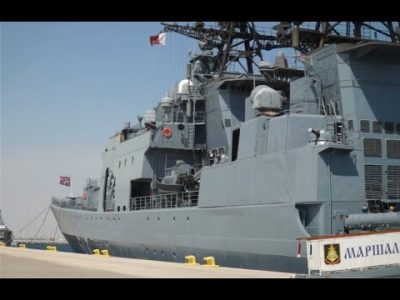Last Updated on 06/07/2020 by OTC

The nuclear submarines are the weapons that should be used very carefully, considering the probability of nature and personnel damage caused by the nuclear reactor it carries. Today, six countries deploy some form of nuclear-powered strategic submarines: the United States, Russia, France, the United Kingdom, China, and India, as the backbone of their defence policy. Several other countries, including Argentina and Brazil, have ongoing projects in different phases to build nuclear-powered submarines.
The nuclear leakage that was happened when the special purposed Russian pocket submarine sank last year, increased concerns about its effects on nature. But have you ever thought how many nuclear submarines have been sunk so far?
Nine nuclear submarines have sunk, either by accident or scuttling.
- The Soviet Navy has lost five (one of which sank twice) (K-8, K-27, K-219, K-278, K-429)
- The Russian Navy two (K-141 Kursk, K-159)
- The United States Navy (USN) two (USS Thresher and USS Scorpion)
Three were lost with all hands – the two from the United States Navy (129 and 99 lives lost) and one from the Russian Navy (118 lives lost), and these are also the three largest losses of life in a submarine. All sank as a result of accident except for K-27, which was scuttled in the Kara Sea when proper decommissioning was considered too expensive. The Soviet submarine K-129 carried nuclear ballistic missiles when it was lost with all hands, but as it was a diesel-electric submarine, it is not included in the list.
Of the nine sinkings, two were caused by fires, two by weapon explosions, two by flooding, one by bad weather, and one by scuttling due to a damaged nuclear reactor. Only USS Scorpion’s reason for sinking is unknown. Eight of the submarines are underwater wrecks in the Northern Hemisphere, five in the Atlantic Ocean and three in the Arctic Ocean. The ninth submarine, K-429, was raised and returned to active duty after both of her sinkings.
Here are the location of sunken nuclear submarines in Arctic and the Atlantic:
-

Atlantic -

Arctic
U.S. Navy Casualties :
USS Thresher (SSN-593): The second USS Thresher (SSN-593) was the lead boat of her class of nuclear-powered attack submarines in the United States Navy. On 10 April 1963, Thresher sank during deep-diving tests about 350 km (220 mi) east of Boston, Massachusetts, killing all 129 crew and shipyard personnel aboard. During deep-diving trials after flooding, loss of propulsion, and a failed attempt to blow the emergency ballast tanks, causing it to exceed crush depth. It was the first nuclear submarine lost at sea.
USS Scorpion (SSN-589): USS Scorpion (SSN-589) was a Skipjack-class nuclear-powered submarine that served in the United States Navy. She sank May 22, 1968, evidently due to implosion upon reaching crush depth. The results of the U.S. Navy’s various investigations into the loss of Scorpion are inconclusive. There are various theories about the loss. All 99 men on board died. Location: 740 kilometres (400 NMI) southwest of the Azores.

Soviet Union Navy Casualties :
K-27: The only Project 645 submarine (a variant of the Project 627 November-class submarine, with liquid metal, cooled reactors), K-27 was decommissioned in 1979 after many years of difficulty with its reactor. On September 6, 1982, the Soviet Navy scuttled it in shallow water (108 ft (33 m)) in the Kara Sea after sealing the reactor compartment. This sinking in shallow water was contrary to the recommendation of the International Atomic Energy Agency (IAEA).
K-8: A Project 627 November-class submarine was lost on April 11, 1970, while being towed in rough seas after a fire on board. The submarine’s crew was initially evacuated to a surface vessel, but 52 re-boarded the surfaced submarine for a towing operation. All 52 sailors died when the submarine flooded and sank, for total losses of 60 crew when counting the 8 who perished on April 8 in the initial fire. Location: Bay of Biscay, 490 kilometres (260 NMI) northwest of Spain in the North Atlantic Ocean.
K-219: A Project 667A Yankee I-class sub was damaged by a fire in a missile tube and explosion on October 3, 1986. It then sank suddenly while being towed after all surviving crewmen had transferred off. Six crew members were killed. Location: 950 kilometres (510 NMI) east of Bermuda in the North Atlantic Ocean.
K-278 Komsomolets: The only Mike-class sub built sank due to a raging fire April 7, 1989. All but five crewmen evacuated before it sank. A total of 42 crew died, many from smoke inhalation and exposure to the cold waters of the Barents Sea, while 27 crew members survived.
K-429: A Project 670A Charlie I-class sub sank twice, once at sea from flooding during a test dive (23 June 1983), then two years later (13 September 1985), from flooding at her moorings. Sixteen crew died in the first incident. K-429 was raised after both sinkings and was decommissioned two years after the second.

Russian Navy Casualties :
K-141 Kursk: The Oscar II-class submarine sank at “Summer-X” naval exercise in the Barents Sea on August 12, 2000, after an explosion in the torpedo compartment. All 118 men on board were lost. The British and Norwegian navies offered assistance, but Russia initially refused all help. All except the bow section was salvaged.
K-159: Left to rust for 14 years after being decommissioned, this Soviet-era November-class submarine sank in the Barents Sea on August 28, 2003, when a storm ripped away from the pontoons necessary to keep it afloat undertow. Nine of the 10 salvage men on board were killed.
Special purposed small submarines are not included in these losses.

One nuclear submarine could change the destiny of war just as happened in Falkland. Yet, due to the bad memories left by the Chernobyl disaster, there is a concern for everyone when nuclear and accident words come together. Environmental consequences of such incidents may be very dangerous due to the maritime pollution it causes. Although there were some case studies made about the effects of the accidents of the nuclear-powered submarines to nature, we are not clear about the damage those accidents left behind. As we outlined at the beginning, for the good of all human beings in the world, countries which operate nuclear-powered submarines should be quite careful in order to avoid unwanted disasters. Because the “rest of the world does not have to pay for their selfishness.“













Comments